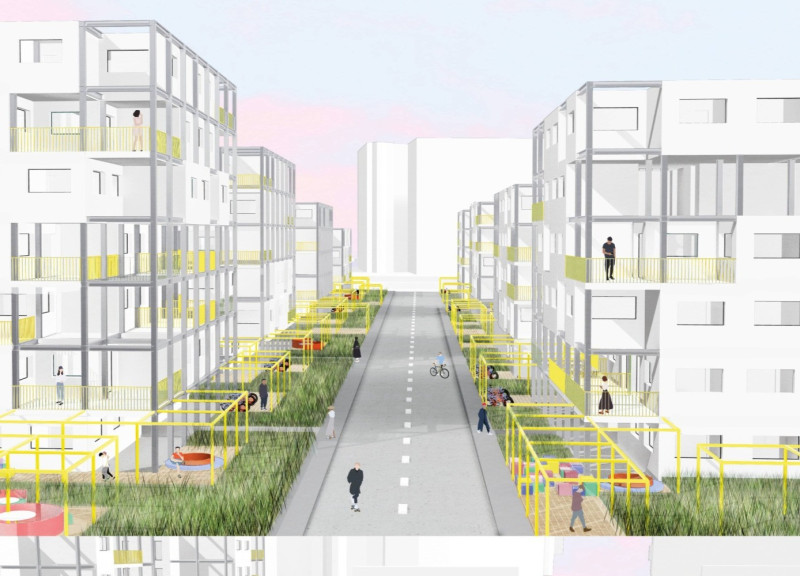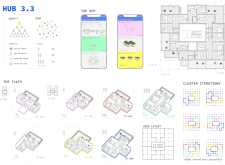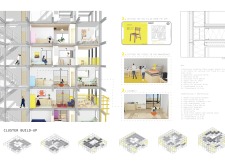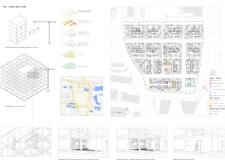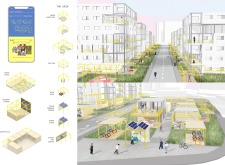5 key facts about this project
HUB 3.3 is an architectural design that focuses on community living and the connections between residents. Set in an urban area, the design encourages interaction through flexible residential units and shared public spaces. It embodies the ideas of user orientation, information sharing, and digital inclusion, creating a supportive environment for diverse lifestyles.
Adaptable Living Spaces
The design features a variety of apartment layouts that emphasize flexibility and personal choice. Residents can select from different options, including the number of bedrooms, the choice of a living room, and even the orientation of their unit. These decisions allow individuals and families to create spaces that fit their unique needs, making the living arrangements more comfortable and personalized.
Core Layout and Construction
Unit sizes vary from 32 sqm to 76 sqm, offering numerous possibilities for configurations. With over 5,000 potential arrangements, the design embraces diversity in how residents can inhabit their space. The construction process incorporates modern techniques, utilizing CNC files and makerspace resources that streamline assembly and improve efficiency in building.
Material Details
The construction includes specific techniques that enhance strength and energy efficiency. Rainscreen cladding is used with fibre cement board to protect against weather conditions. An air cavity is included for structural support, while woodfibre insulation and OSB board work together to provide thermal benefits. Inside, the walls feature plasterboard for a finished look, ensuring both comfort and functionality.
Public and Communal Areas
The design also integrates a range of public spaces that promote social interaction among residents. These areas include media labs, workshop rooms, and co-working spaces. There is also a café and a digital art gallery, allowing residents to engage in cultural activities. Outdoor features like marketplaces and an outdoor cinema create inviting gathering spots for community events.
Green Urban Furniture
Urban furniture elements, such as seating and bike racks, are thoughtfully integrated into the design, emphasizing sustainability. Solar-powered screens offer comfort in public areas and help reduce energy use. By focusing on these details, the project enhances the living experience, creating an engaging environment that fosters connections among residents.


